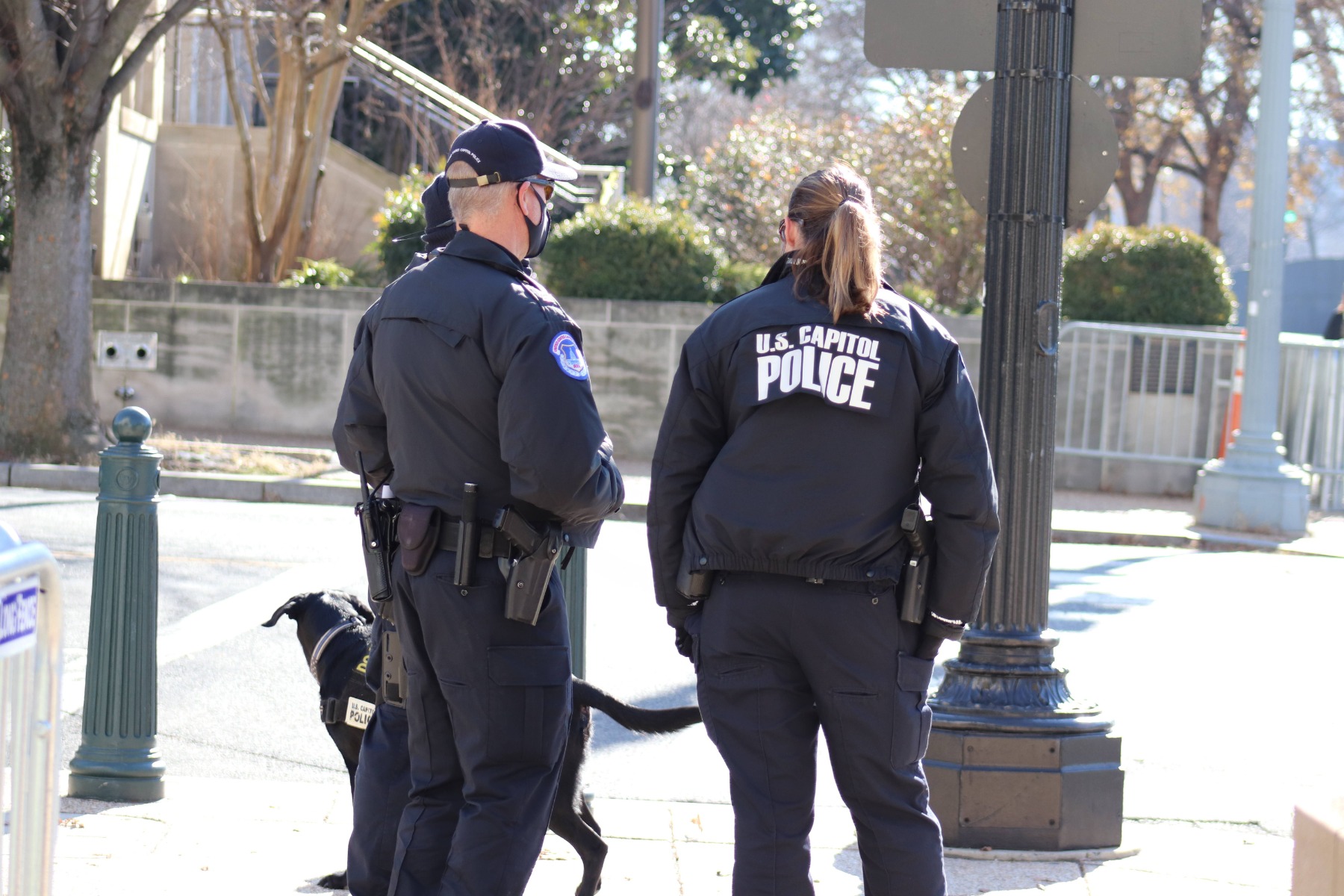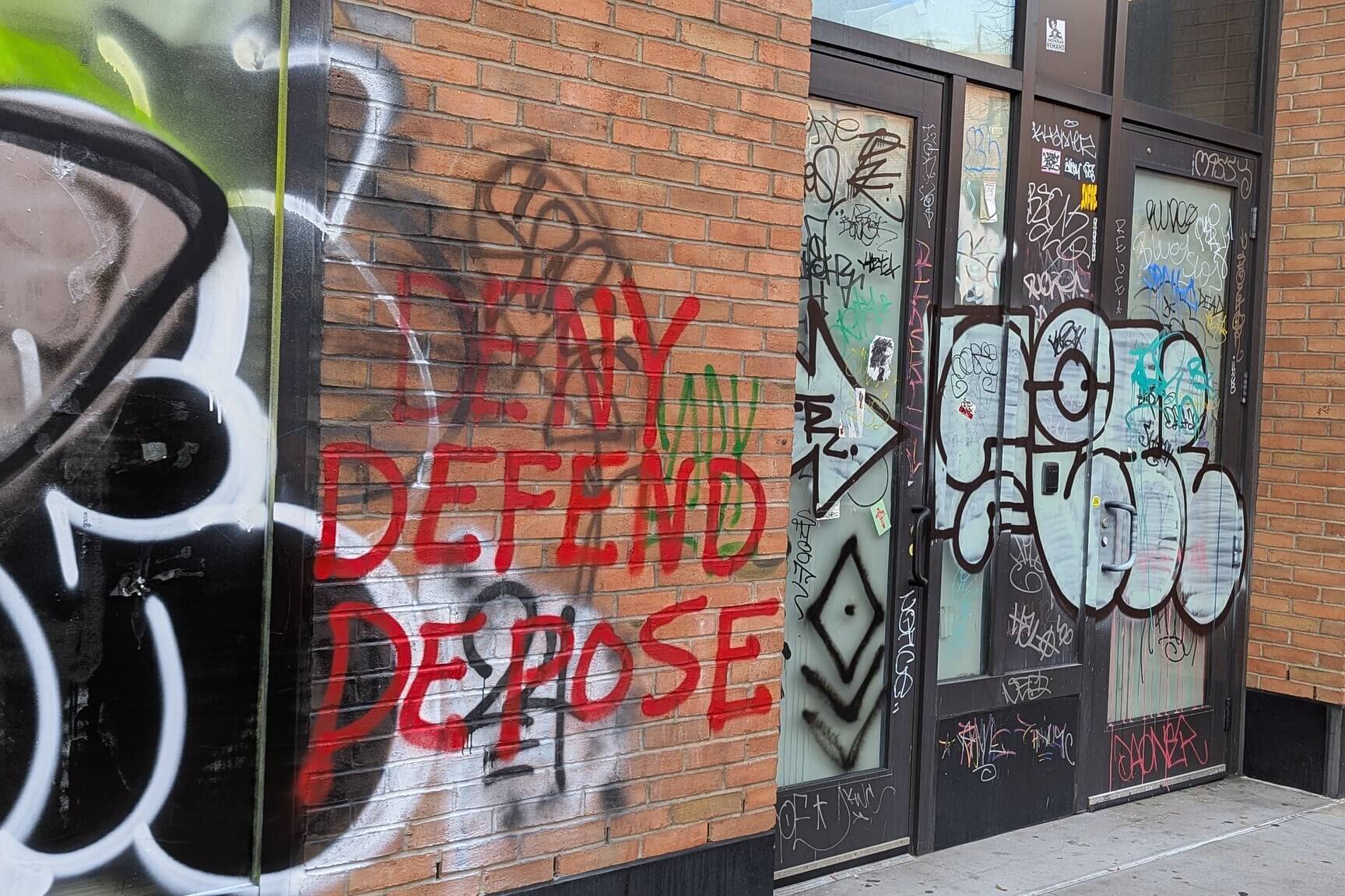The Slow Burn Threatening Our Democracy
Unless policymakers act, increasing threats to public officials will normalize political violence and stymie civic engagement and democratic processes.

Published by The Lawfare Institute
in Cooperation With

A woman in Texas left a message on a federal judge’s voicemail saying, among other things, “[Y]ou are in our sights, we want to kill you.” An Illinois woman sent an email to former President Donald Trump’s youngest son’s school with a message saying she “will shoot [Trump and his son] straight in the face any opportunity I get.” A man in Florida threatened a congressman, saying that he would “bash his … head in with a bat.” Then there’s the Wisconsin man who threatened a prosecutor in phone calls—300 of them. These examples, culled from the federal courts criminal docket, illustrate a bigger problem over time. By our count, over the past 10 years, more than 500 individuals have been arrested for threatening public officials. And the trendline is shooting up.
With the 2024 presidential election fast approaching, the uptick in threats against public officials may make the idea of another Jan. 6 attack or similar large-scale political violence moment loom large. But the focus on preventing another Jan. 6 may be more distracting than helpful. In practice, the threat of domestic extremism has moved into a new phase, something best referred to as a slowly growing everyday insurgency, where an unprecedented number of disparate individuals motivated by similar underlying grievances seek to intimidate and coerce public officials.
These threats coalesce together, forming a culture that helps normalize the idea of political violence. These threats are most prevalent online but are also transmitted through telephone calls, handwritten letters, videos, and face-to-face confrontations.
Over the past year, we conducted a deep dive into the world of communicated threats directed at public officials in these categories: election and elected, education, healthcare, and law enforcement, to include the judiciary. Our team retrieved and carefully reviewed all federal charges that fit these parameters between 2013 and 2022. We collected and culled thousands of court documents to understand the grievances animating the threats, the way threats were communicated, the targets of these threats, and many other characteristics. We wanted to understand as much as possible about each incident, starting from the alleged offender(s) involved and the victim(s) targeted. Selecting federal cases with corresponding court documents, which are typically rich in detail, gave us the best chance to do so. Other options would have produced far fewer details about these issues. That said, the federal courts provide just one lens into what is a much bigger problem as the actual prevalence of threats to public officials is higher given that some individuals are charged at the state level or are simply not charged at all.
There are some notable takeaways in the data. First, more than 500 individuals were charged in federal court in the past 10 years for making threats against public officials. Second, more than half of them did not express an explicit ideological motivation. Third, of those who displayed an ideological bent, it tended to be anti-government and/or racist in nature. Fourth, most individuals charged for making threats—70 percent in our data set—had a criminal background. A significant number of them were repeat offenders—known as “serial threateners”—who had been arrested previously for a similar crime but with a different victim.
A review of the data reveals that prosecutorial discretion is king. There is little rhyme or reason to what threats rise to a federal level of charges. In some districts, a broad threat of mass killing is enough to trigger a case, while other U.S. attorney office’s appear more comfortable bringing charges against individuals who make specific, actionable threats with targets, dates, and times.
In many respects, federal charges reflect the tip of a much larger iceberg as many threats to public officials remain unreported or when reported never result in either federal or state charges. Thorny constitutional issues regarding protected speech can confuse the difference between the legal and democratically important expression of grievances and the expression of grievances along with threats of bodily harm or worse. The latter are quite clearly not protected by the U.S. Constitution.
To be sure, threats against public officials have a long history in the United States. But the data reveals something new: a concentration of threats that began to spike in 2017, corresponding with a general increase in polarization following the 2016 presidential election. Our results also follow a similar pattern found by the U.S. Capitol Police Department, which monitors threats exclusive to congressional officials. Perhaps most alarming is that we don’t believe we’ve hit the high point in the time series. The spike in threats after 2017 reflected, at least to some extent, President Trump’s role in promoting political violence both during the 2016 presidential campaign and in the four years of his administration that followed. For example, in 2020, an ABC News study found that since 2015, there were at least 41 criminal cases invoking Trump as inspiration for a violent act or threat of violence. No comparable cases could be found for Trump’s predecessors, Barack Obama and George W. Bush (each of whom served twice as long in office).
An untold number of nameless and faceless individuals use online spaces to target officials they perceive as traitors for enacting safety measures related to public and personal health or helping secure free and fair elections. These perpetrators never need to attend a rally or formally join an extremist organization—and often don’t. This army of trolls has threatened public officials by doxing—posting home addresses and photos of their targets—or threatening to dox with impunity. These threats may or may not be acted upon. In many respects, no one needs to pull a trigger or detonate a bomb for this type of terror to operate effectively. The fear is enough. So even without violence, lives can be ruined, institutions can be weakened, and extremists can move one step closer toward accomplishing the normalization of violence and a degradation of democracy. Indeed, a recent report found that election officials are resigning in significant numbers due to harassment and threats.
While some of the threats we studied may be considered idiosyncratic one-offs, we believe that, taken together, the threats represent something much more insidious. This type of extremist culture seems to be growing just as civic culture continues to weaken and confidence in major social institutions declines. Some of the cases we examined involve defendants who had long-standing ties to extremism, such as the Florida-based white supremacist Daniel McMahon who, in 2020, pleaded guilty to threatening to kill a person of color running for city council in Charlottesville, Virginia. McMahon’s online screen name was “Jack Corbin” and he fashioned himself as the “antifa hunter,” conspiring with Pittsburgh Tree of Life synagogue shooter Robert Bowers. Together, they were threatening activists by posting photos of their children and other personal information online. Although McMahon’s threat against the person running for city council resulted in his arrest and eventual imprisonment, the intimidation led the person to end his candidacy, underscoring the chilling effect these types of threats can and often do have on our system of governance.
Far more common than cases like McMahon’s involve hyperpartisan individuals not affiliated with any specific extremist groups but influenced by extremist propaganda such as various conspiracy theories. Social media and other types of digital communication have been a gold mine for extremists interested in circulating and amplifying conspiracy theories. In turn, these conspiracies influence a growing segment of the U.S. population and, in some cases, play an important role in the decision to threaten public officials. Social media’s purported anonymity gives some people a false sense of impunity and emboldens them to say whatever they like.
The rise in threatening behavior is met with an uneven response by the federal courts. Based on our analysis, there are substantial differences across the 94 federal districts in how these cases are investigated, charged, and, in the instances of conviction, sentenced. Vague, single-incident threats in some cases have resulted in charges, while in other cases, perpetrators who communicate hundreds of very specific threats are simply admonished with repeated warnings. And for convictions, little, if any, specialized programming has been designed to address these offenses, especially the repeat offenders who are serial threateners. There is also no uniformity in their probation restrictions. Some individuals are required to stay away from “known extremists” while others simply have a requirement of staying out of legal trouble for a set amount of time. This lack of uniform probation guidance may allow for serial threateners to continue their menacing actions as long as they do not violate specific legal statutes. It also shows little parity in the justice system, where a conviction in one state results in dramatically different probation restrictions in another state.
Our research also points toward interventions that could help combat the problem and disrupt growing threats directed toward public officials.
One is involving nongovernmental, nonprofit organizations. Bipartisan efforts include the Committee for Safe & Secure Elections (CSSE), which aims to protect election workers across the country and helps inform law enforcement about the unique challenges these officials face related to threats and violent attacks. CSSE offers important resources, such as tip sheets for election officials on how to address harassment and intimidation. Expanding this model beyond election officials to the full range of public officials could help ensure those in harm’s way are receiving appropriate support. Other nonprofits such as Protect Democracy focus on civil litigation to hold those who intimidate and harass public officials accountable.
What’s more, one currently unexplored avenue for protecting public officials involves a public health-style approach focused on prevention. This begins with increased awareness, through public messaging campaigns and targeted outreach, regarding where constitutional protections in speech end and where criminal violations begin. Defendants’ claims that they didn’t know their speech broke the law might seem implausible given the nature of their menacing language. While the “I didn’t know” defense may reflect efforts to reduce culpability, our research suggests, at least with the perpetrators, there are real gaps in awareness about certain legal boundaries as demonstrated by one defendant who incredulously asked law enforcement, “You know how hard it is to prove a threat?” That should come as no surprise given the complexity of statutes in this area and the subjective nature of the distinctions between protected speech and criminal threats.
Policymakers may also want to consider strengthening statutes that address criminal threats, especially related to those communicated online, and inject some uniformity in its application. The Department of Justice recently announced the creation of an Election Threats Task Force, but given the size, scope, and targets of threats, the department should consider expanding the task force’s remit to all public officials, not only those who handle elections. The heavily relied-on law enforcement approach of offering a stern warning before an eventual arrest does not appear to be as effective as one would think. To remedy this, the U.S. government should consider more tailored individual interventions given that many offenders have extensive histories regarding making threats and documented mental health issues.
Finally (and it should go without saying but is worth repeating), it would behoove Americans to turn down the heat on politics. Passionate political engagement is arguably the cornerstone of a vibrant democracy. But policymakers and the public must find ways of nurturing that engagement without the threat of violence. When one side views the other as someone who should be violently silenced rather than a partner in a debate on ideas, the slow burn threatening American democracy will continue unabated.






